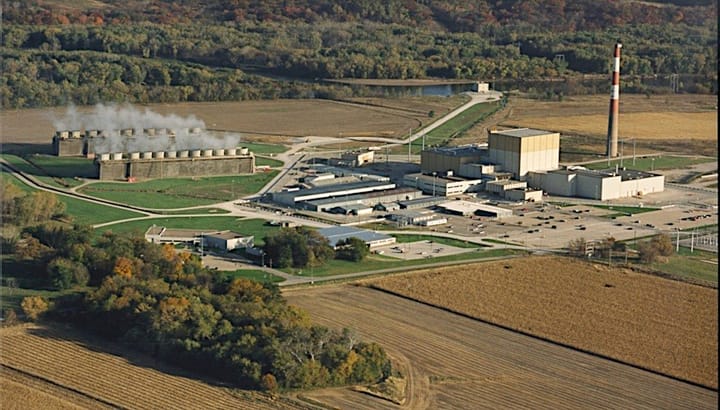States must ensure AI-driven data center growth strengthens—not strains—the grid. Fair pricing, consumer protection, and community reciprocity can align private innovation with public equity, turning energy demand into shared resilience.
Artificial intelligence has changed the geography of electricity demand, redrawing the contours of the American grid with the speed of software but the permanence of infrastructure. Data centers—once the invisible warehouses of the internet—now stand as the most visible symbols of the digital age’s appetite for energy. The U.S. Department of Energy estimates that by the decade’s end, these facilities could consume more power than entire states, reshaping not only transmission planning but the moral arithmetic of the energy transition itself.
The question confronting governors, regulators, and utilities is no longer whether AI data centers will be built—they will—but under what terms. Who pays for the transmission lines, substations, and transformers that feed this digital growth? Who shields households from the price volatility that follows? And how can state policy convert a new industrial boom into a foundation for long-term resilience rather than a new strain on vulnerable ratepayers?
Across the country, the answers diverge. Maryland’s proximity to northern Virginia’s “Data Center Alley” has meant higher household bills and grid congestion spilling across state lines. Texas, by contrast, allows regulators to disconnect data centers during emergencies, shifting reliability risk back onto corporate giants. Georgia, thanks to its foresight in completing the Vogtle nuclear units, has met the AI surge with steadier prices and cleaner capacity. Each outcome reflects a choice—a design, not a destiny.
The next chapter of AI’s energy story will not be written by engineers alone, but by state policymakers. Their task is both technical and ethical: to write rules that align innovation with fairness, and to make electricity governance as adaptive as the technology it now powers.
Principles for a Fair AI Grid
At the heart of equitable energy policy lies an old doctrine: cost causation equals cost contribution. It is the golden rule of utility economics—those who drive the need for new investment must pay their share. But in the AI era, this principle collides with a new asymmetry. Hyperscalers—Amazon, Microsoft, Google, Meta—possess tools ordinary consumers lack: long-term renewable contracts, private generation assets, and global portfolios that allow them to move computation where electricity is cheap and clean. Households, by contrast, are fixed to geography and tariff. They endure; hyperscalers maneuver.
Fairness, then, must be redesigned. States need policies that convert corporate flexibility into system value, ensure communities hosting these vast facilities share in the benefits, and protect ratepayers from volatility they did not cause. The goal is not to punish scale but to civilize it—to ensure that AI’s energy footprint becomes a source of resilience, not resentment.
Three broad levers define this new social contract between data centers and the public grid: pricing fairness, consumer protection, and community reciprocity.
Pricing Fairness
Pricing fairness begins with impact fees and congestion accountability. Much like tolls on a highway, these charges ensure that those who drive extraordinary load pay proportionally for the infrastructure they require. Virginia’s new large-load tariff offers an early template: data centers above a set threshold contribute directly to the cost of transmission expansion. The same principle can extend across regions. In the multi-state grid serving the Mid-Atlantic, congestion costs could be traced to high-demand clusters and assigned accordingly, discouraging overconcentration while funding upgrades where they’re most needed.
States can also reform standby tariffs to reflect performance, not size. A hyperscaler that curtails consumption during peak events should not pay the same as one that draws at full force. By tying charges to responsiveness, regulators can turn flexibility into a form of capacity—rewarding good behavior rather than merely taxing scale.
Consumer Protection
Households, by contrast, require insulation from volatility. Retail pass-through caps and rate-smoothing mechanisms can stabilize bills when wholesale markets fluctuate. These are not subsidies; they are shock absorbers, maintaining political legitimacy in an era when public tolerance for price spikes is thin.
More creatively, states can transform data centers from passive liabilities into active participants. Through flexible-load tariffs, regulators can compensate campuses for shifting non-urgent compute tasks to off-peak hours. Verified through telemetry and job-scheduling data, such programs transform digital elasticity into a public asset. In essence, every teraflop becomes a potential reliability tool.
Finally, regulators can impose on-site or contracted generation standards, requiring that new campuses meet a portion of their peak load with self-supplied or firm renewable capacity. This internalizes part of the reliability cost now borne by the public grid and helps ensure that the expansion of AI computing does not cannibalize the stability of the very systems it depends on.
Community Reciprocity
Economic fairness must extend beyond tariffs. Host communities deserve visible, measurable benefits from the infrastructure they enable. States can establish reciprocity floors—structured payments tied to load or capacity—that fund workforce training, resilience hubs, or property-tax stabilization. These mechanisms transform data centers from extractive neighbors into civic partners.
Georgia’s approach hints at this balance. The state paired new nuclear capacity with local investment and workforce development around the Vogtle site. The result is not just cleaner power but a community narrative of shared progress. The lesson for AI is clear: growth without reciprocity breeds backlash; growth with reciprocity builds legitimacy.
The State Toolkit in Practice
Policy design gains credibility only through implementation. The following toolkit outlines how states can operationalize fairness across different regulatory and market environments.
1. Large-Load Impact Fees: Require new interconnections exceeding 25–50 megawatts to contribute a defined share of network reinforcement costs. Use transparent formulas indexed to peak load and actual upgrade expenditures.
2. Congestion-Cost Allocation: Direct regional operators to publish quarterly congestion maps identifying demand clusters and their attributable costs. Apply surcharges locally rather than spreading them system-wide.
3. Flexible-Load Tariffs: Pay data centers that shift or curtail compute during critical hours, verified by metered telemetry. Treat this behavior as an ancillary service, with penalties for nonperformance and bonuses for high responsiveness.
4. Retail Bill Shields: Limit household exposure to wholesale volatility by capping monthly pass-through rates and amortizing exceptional spikes over multiple billing periods.
5. On-Site or Contracted Firm Power Standards: Mandate that a portion of each campus’s load be met through physically deliverable, low-carbon generation. Audit compliance during top peak hours to ensure claims reflect reality.
6. Transmission Co-Investment: When a project triggers the need for new lines or substations, require a proportional financial contribution. Co-investment not only shares cost but aligns construction timelines.
7. Public–Private Infrastructure Funds: Pool state, utility, and hyperscaler capital to finance shared assets such as storage, renewables, and grid modernization. Governance should be independent, transparent, and regionally representative.
8. Community Benefit Agreements: Set statutory floors for local investment: for example, $1–$2 million in annual community payments per 100 megawatts of peak draw, allocated to resilience hubs and vocational training.
Collectively, these tools redefine the relationship between private computing and public power. They acknowledge that electricity is not a limitless commodity but a shared inheritance, sustained only when growth and governance evolve together.
The Moral Architecture of the Grid
Electricity has always carried more than current; it carries covenant. The public’s willingness to share a grid rests on trust that its benefits and burdens are distributed justly. That trust is fragile, particularly in an era when technology companies operate at scales once reserved for nations.
The parallels to earlier energy transitions are instructive. When the Tennessee Valley Authority brought light to the rural South, fairness was encoded in its founding legislation. When postwar regulators adopted cost-causation principles, they institutionalized a moral logic: that progress without equity is unsustainable. Today’s data-center surge poses the same challenge in digital form. Without deliberate policy, volatility will cascade downward while resilience accumulates upward.
The task for states, then, is to build a new layer of governance infrastructure as vital as the wires themselves. They must legislate transparency in cost allocation, reward flexibility, and embed reciprocity into law. In doing so, they will transform AI’s voracious energy demand into a force for modernization.
The story ends where it began—with the grid as both machine and metaphor. If electricity once powered the industrial age and later the information age, it now underwrites the age of intelligence. Whether that intelligence serves the many or the few depends not on the brilliance of algorithms but on the wisdom of policy. States hold the pen. What they write next will decide whether the AI century becomes an era of shared light or widening shadow.
Notes
- PJM Interconnection, State of the Market Report 2023 (Norristown, PA: Monitoring Analytics, 2024).
- Google, Carbon-Aware Computing White Paper (Mountain View, CA: Google, 2023).
- Georgia Power, “Vogtle Units 3 and 4 Begin Commercial Operation,” press release, 2024.
- Lawrence Berkeley National Laboratory, Uncertainty in Complex Energy Systems: A Framework for Adaptive Governance (Berkeley, CA: LBNL, 2024).



